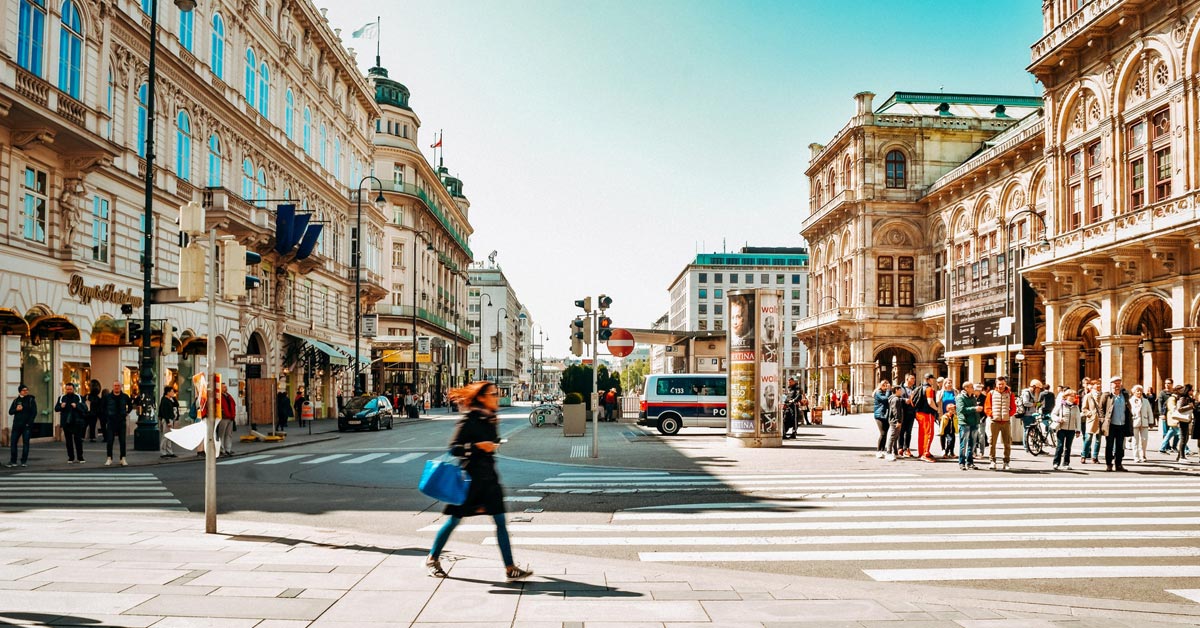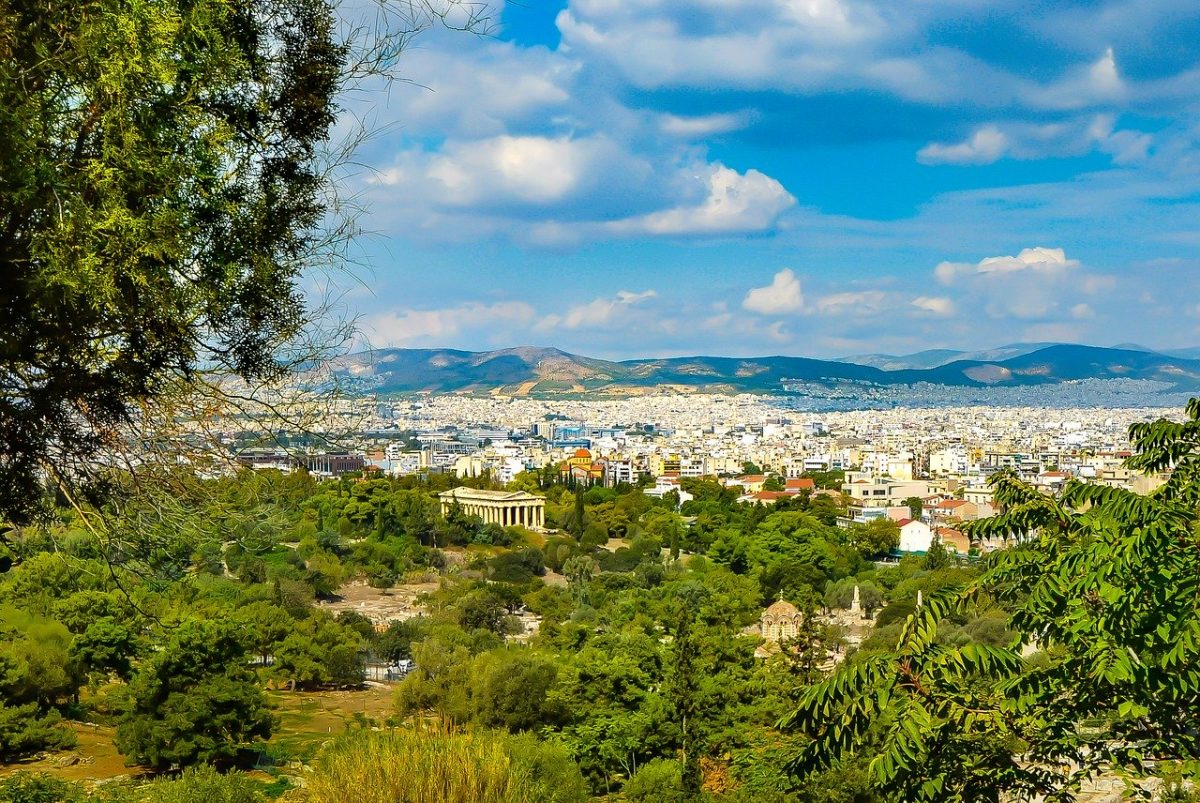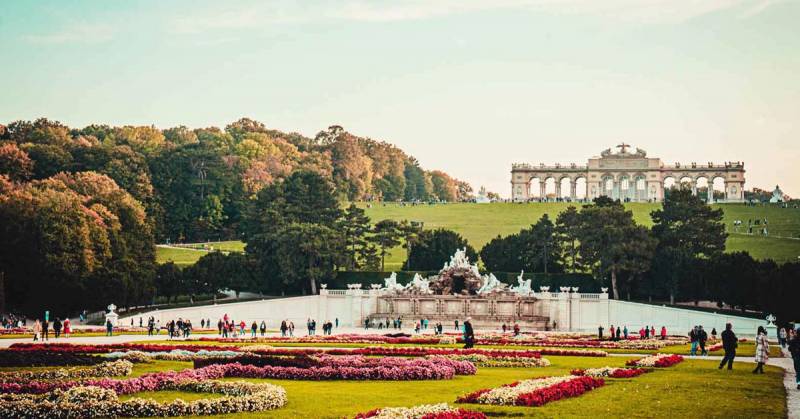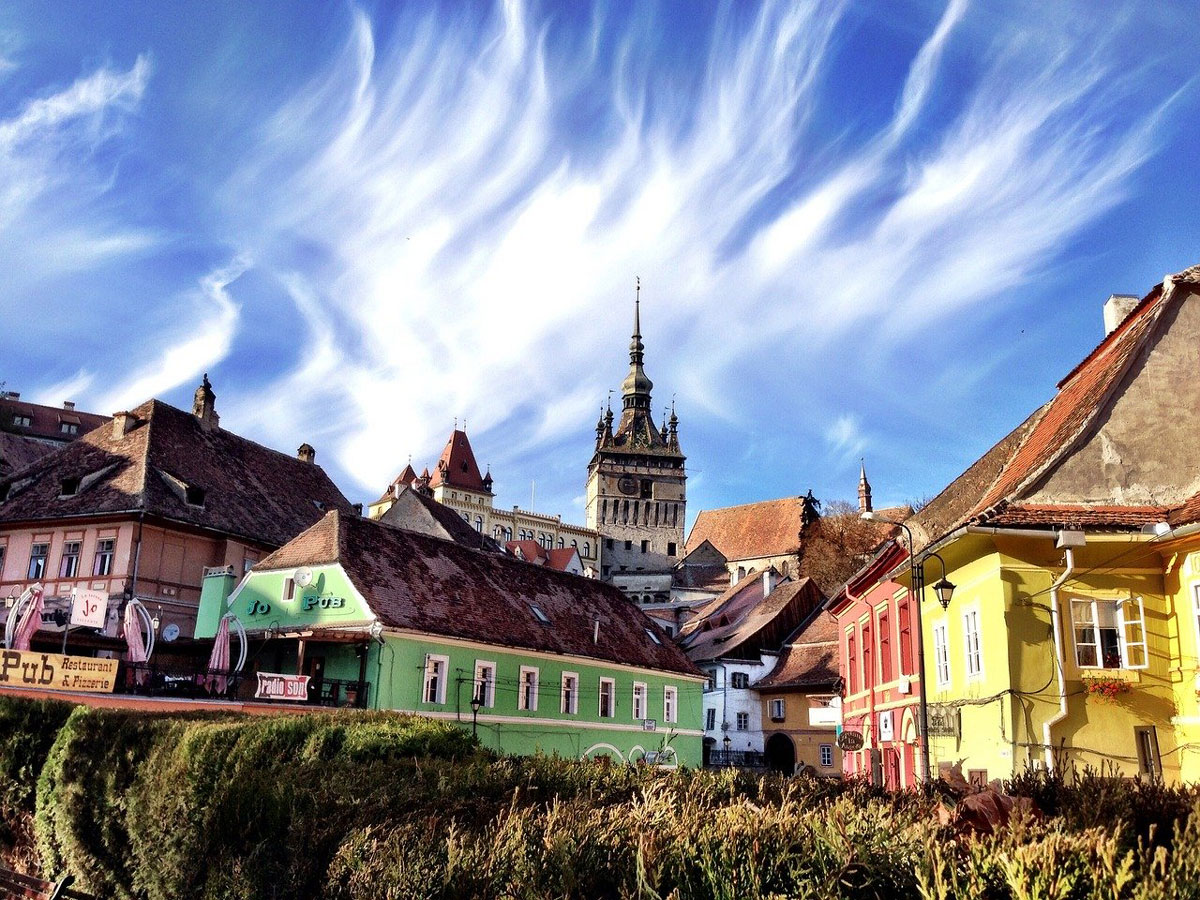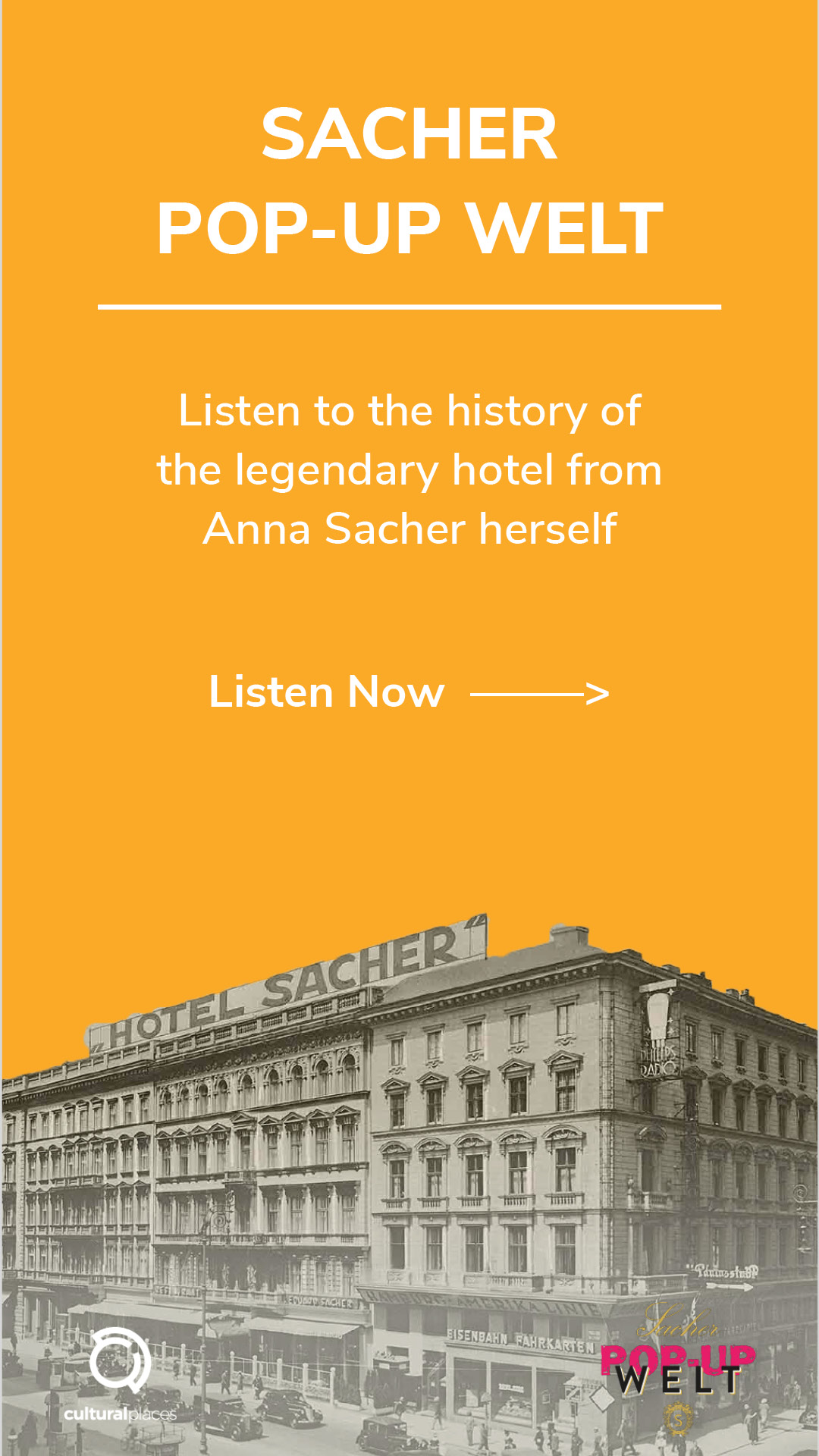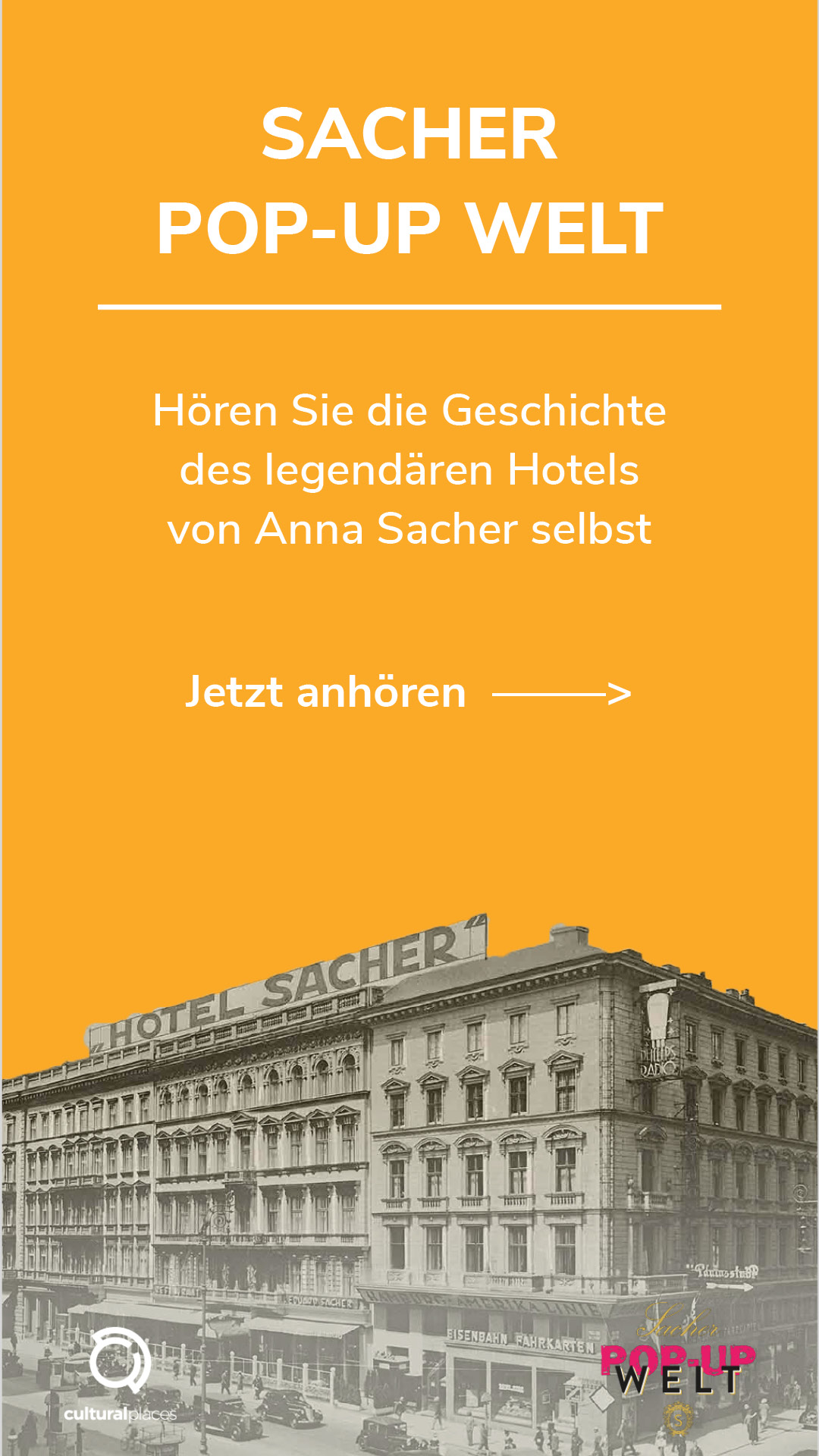Vienna Story: Ultimate Guide to Vienna
Are you considering a trip to the lovely city of Vienna and are looking for many insights that will help you prepare properly? Vienna is full of amazing places to visit and amazing historic things to explore, it will take you some time to get to know it. In order to help you explore Vienna easily, we compiled all of the important information into one ultimate Guide to Vienna. Read it, take notes, and enjoy!
A Brief History of Vienna
You already know that Vienna is very rich in cultural and historical heritage, but do you know how far back it dates? Let’s start this ultimate Vienna guide with a brief history lesson…
Lovely Austrian capital was founded by ancient Romans, who had built a couple of military camps along the river Danube, on the very edge of their empire of the time. One of those camps, known by the name of Vindobona (from Gaulish windo “white” and bona “base/bottom”), which was established in the 15 BC, lies exactly underneath the heart of Old Vienna, around the present Hoher Markt. There is even an underground museum that you can visit today and explore the Roman excavations.

(cc) Wolfgang Sauber / CC BY-SA 2.0
Fast forward to the Middle Ages: the city of Vienna got more important with the rise of the Habsburg Empire when it became the capital for the new rulers. Vienna was sieged by the Ottoman armies twice, in 1529 and 1683, but they failed to conquer it in both cases.
When the Holy Roman Empire got to its end in the early 19th century, Vienna kept its importance, but as the capital of the newly founded Austrian Empire, that later became the Austro-Hungarian Monarchy. All this time, it was under the rule of the Habsburg dynasty. Later in the 19th century, Vienna became a real cosmopolitan city with about 2 million inhabitants, which was more than it has today. This was the period when most of Vienna’s impressive architectural landmarks were built, but we will come to this topic later in this article.
After this bloom naturally came the fall: the first half of the 20th century was pretty harsh. First, there was WWI, which brought the significant downsizing of the Austrian territory, followed by democracy, and then fascism and WWII. After these unfortunate events, Vienna lost its international reputation, which got re-established over time.
Nowadays, Vienna is a modern cultural city, loved by more than 15 million tourists that come to visit each year. Its cultural heritage is impeccable — you can see evidence of the happenings from the past all around the city, especially when it comes to the heritage of the Habsburg monarchy, which left so many architectural wonders for us to admire today.
A Guide on What to Do in Vienna
Vienna is a very interesting cultural city. There are so many things to see in Vienna, it can be explored in many different levels. So, if you’ve never been to Vienna and haven’t explored it properly, keep reading and start discovering Vienna.
Admire the Architecture in Vienna
A variety of architectural styles can be found on the streets of the Austrian capital: you will find everything from Romanesque and Gothic buildings, to Baroque and Historicism, and contemporary architecture. As the existing city center represented the whole city of Vienna for centuries, you can imagine that some parts and buildings were rebuilt many times before the city fortifications were torn down in the 19th century.
So, when it comes to the architecture that dates back before the city walls were torn down, there are only a few good examples left: the most famous one is the gothic St. Stephen’s Cathedral (Stephansdom), which marks the city center and is one of the best-known Viennese (and Austrian) landmarks. The most famous example of Romanesque architecture might be St. Rupert’s Church (Ruprechtskirche), which is believed to be the oldest in the city (but there are some doubts about that).
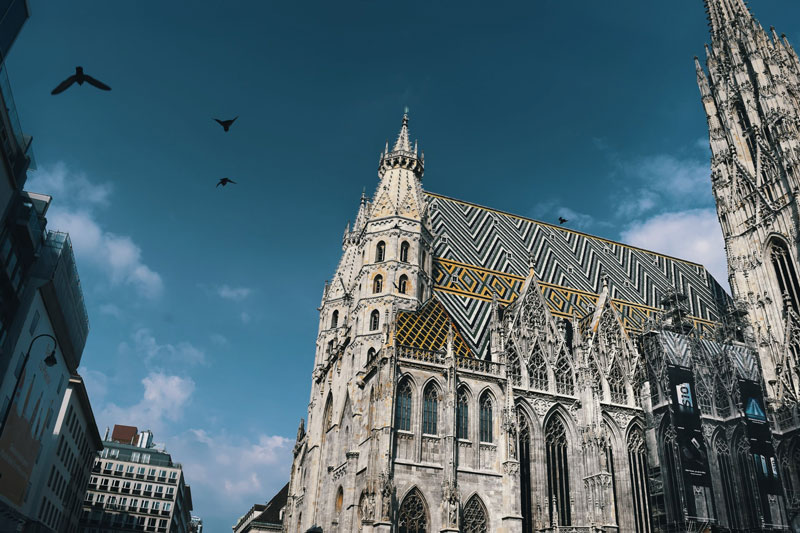
Hofburg Imperial Palace could be another example of medieval architecture in Vienna, but it has been modified so many times, and we can see a few architectural styles in the complex: from Gothic to Renaissance, Baroque to Rococo, and a little bit of Classicism.
The highly decorative style of Baroque, which dates back to the 17th century, gave us many nice landmarks all around the city center. One of the best examples of Baroque architecture is surely St. Charles Church (Karlskirche), located on the Karlsplatz. This gorgeous church, known mostly for its spectacular dome, is surely one of the most important Baroque churches built north of the Alps. Some other well-known examples of Baroque architecture are the spectacular Schönbrunn and Belvedere palaces.

The predominant architectural style in Vienna is historicism, which dates back to the second half of the 19th century after the city walls were torn down and replaced by the large circular road that surrounds the city center — the Ring Road (Ringstrasse). Historicism means that previous styles were copied, combined, and incorporated into the style of the new buildings. Many of the buildings along the Ring Road are built in this style, some of them being the City Hall, the State Opera, the Parliament, and others. The function of the building often determined its style, which is pretty clear if you take the Parliament building as an example — it’s looking very Greek.
If you’d like to read a thing or two about some of the buildings that we mentioned above, we recommend you to check out the following posts:
What to Do in Vienna: Exploring the Most Impressive Buildings
Best Historic Things to Do in Vienna (with photos)
Another style that is important in the development of Viennese architecture is Art Nouveau, which gave us some pretty amazing landmarks. Vienna Secession, as the movement was known in Vienna, left a huge impact on the city’s architecture as we know it today, and it wouldn’t be possible without Joseph Maria Olbrich and Josef Hoffmann — the architects who were there to establish the movement, and Otto Wagner, who joined a bit later. If you’re interested to read a bit more about this movement and find out which buildings are its most famous representatives, check out the blog post on the following link: Most Beautiful Viennese Buildings: Art Nouveau Architecture in Vienna.

Explore the Streets of Vienna
If you love to wander through the city streets and discover great sights around them, instead of being guided to a specific landmark, Vienna is the perfect place for that.
The narrow Viennese streets have a lot of historic stories to tell. Each one of them will show you some great historic facts and insights into city life that you probably didn’t know about. Here we will introduce you to some of the most popular streets around the Viennese city center.
Hoher Markt
Hoher Markt (high market), which dates back to Roman times, is basically as old as the city itself. It was the most important marketplace in Medieval Vienna. All around this street, or marketplace, you’ll see amazing buildings — there are Romanesque and Gothic architectural wonders, but also a lot of functional buildings dating back to the post-war period (after WWII). The most popular landmarks to see here are the Wedding Fountain and the Ankeruhr — an amazing Art Nouveau gilded clock that shows different figures crossing the bridge each hour and plays music in the background.
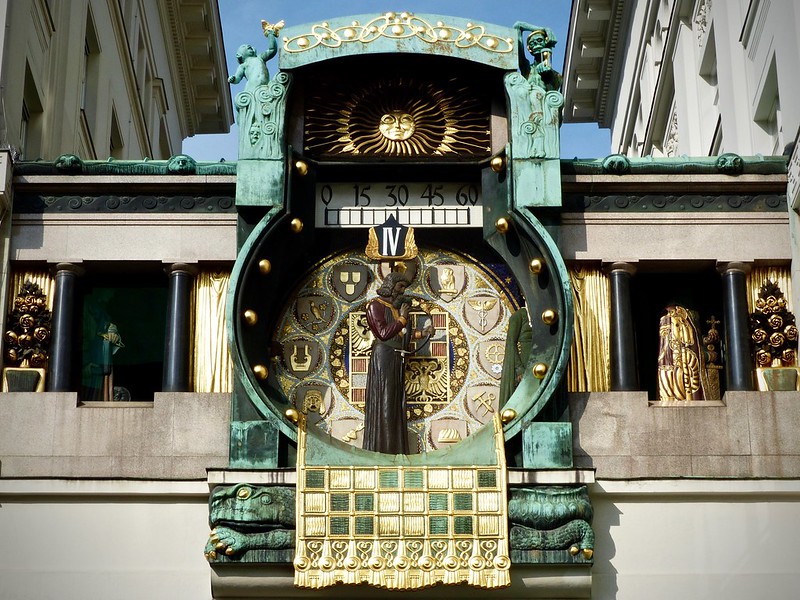
(cc) Arjan Richter / CC BY 2.0
Graben Street
Graben is one of the most popular streets in the Innere Stadt and it’s another street that dates back to Roman times. At that time it was a defensive ditch (“Graben“ means “ditch“ in German) around the core of the city. After the ditch was filled in the 12th century, the area became a popular marketplace. In the 14th century, the place got destroyed in a fire, but it was soon brought back to life and became a residential neighborhood. One of the most famous residents of Graben street was Mozart, who lived here in the 18th century. This famous street became a pedestrian area in 1974, and now it’s one of the most popular shopping streets in Vienna. While walking down Graben street, pay attention to its most famous landmark — the Plague Column, or Holy Trinity Column, which was erected in the memory of the Great Plague victims.

(cc) Pentcheff & Wetzer / CC BY-SA 2.0
Ringstrasse
If you’ve ever seen Vienna from the birds’ perspective (on a map), you’ve probably noticed a circular road that surrounds its 1st district known as Innere Stadt (Inner Town). That road is called Ringstrasse (Ring Road) and it separates the historic Old Town from other Viennese districts. It was built in the mid-19th century, on the place where the old city walls once stood — right after they were deconstructed. The Ring Road is lined with many gorgeous buildings, all built in the aforementioned historicist style, that is also known as Ringstrassenstil (“Ring Road style”). This interesting architectural style is the reason that the road was named a UNESCO World Heritage Site, and is known as the “Lord of the Ring Roads”.
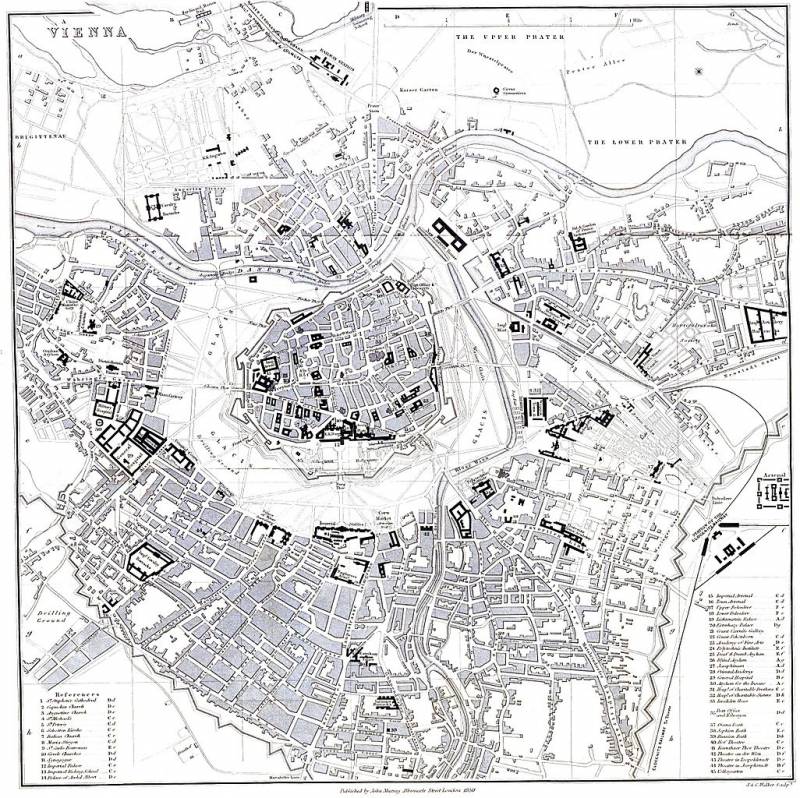
See larger map
These three streets are only our top choice, for details about more lovely Viennese streets check out our blog post called History of Vienna: Vienna’s Best Historic Streets.
Experience Viennese Culture
Viennese Museums
Vienna is full of amazing museums and art galleries where you can learn more about the city’s history and admire the artworks of some of the best visual artists of Austrian origin. Most of those museums are located in wonderful historic buildings, so you can both enjoy wonderful architecture and the exhibitions.
Here’s our pick of some of the best museums around Vienna…
In the amazing Hofburg complex, you will find the Albertina museum — the best and the most famous art museum in Austria. Each of its floors houses a different exhibition and each of its impressive rooms has something great to show. This astonishing museum has a huge collection of artworks, among which you’ll see some of the best works done by Monet, Renoir, Cezanne, Matisse, Miró, and Picasso. You can’t say that’s not impressive! Also, Albertina is home to the world’s largest graphic collections, where you’ll see more than 65.000 drawings and around a million old master prints, but also some more modern graphic works, architectural drawings, and photographs.
Next to Hofburg, you will find more amazing museums to explore — the Art History Museum, one of the world’s best museums, and the Natural History Museum where you will discover the diversity of nature and learn about the beginning of life on our planet. At first sight, you’ll probably think that these buildings look totally the same, but if you look closer you will notice that they have different statues incorporated into their façade. The Natural History Museum has statues that represent Africa, Asia, Europe, and the Americas, while the Art History Museum façade features famous European artists, such as the Dutch Bruegel.

Just across the street from the Art History Museum and the Natural History Museum, you will find a few more amusing buildings, or to be more precise a whole complex called the MuseumsQuartier. The MuseumQuartier in Vienna is one of the world’s largest complexes for contemporary art and culture. It’s an inviting place where historic meets contemporary — you’ll see old architecture and the modern ones as well, and you’ll experience everything from fine art, architecture, music, fashion, theater, dance, literature, children’s culture, game culture, and street art to design and photography. The complex is formed in and around Vienna’s imperial stables that date back to the 18th century, with the new, contemporary buildings added to it in the period from 1998 to 2001. The newest addition was designed by the Austrian architects Laurids and Manfred Ortner, who created a space that brings together recognizable historical structures with contemporary architecture.
Our tip: At mumok (museum moderner kunst stiftung ludwig wien) at Museumsquartier you can visit their latest exhibition “Enjoy – the mumok Collection in Change” this summer and view all central acquisitions and donations of the last decade united in one huge exhibition.
If you want to know how you can spend the perfect day at MuseumsQuartier, we’ve got you covered.
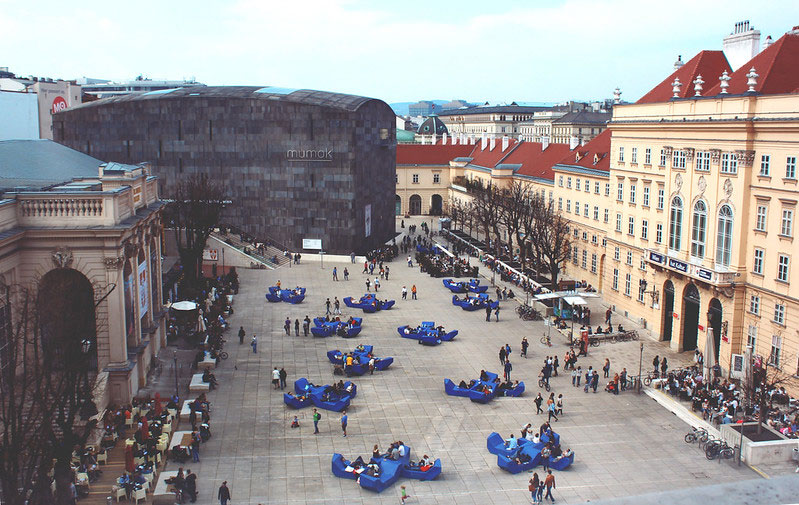
(cc) Anastasia R / CC BY-ND 2.0
If you’re into unusual museums, you should definitely read about one of those on our blog about the wax museum Madame Tussauds — the famous museum with more than 80 wax figures of popular celebrities from around the globe.
Cultural highlights in Vienna you shouldn’t miss
For more cultural highlights to explore in Vienna, we have put together a comprehensive list of exhibitions you shouldn’t miss out on.
Don’t be sad if you missed the Sacher Pop-up Welt at the famous Hotel Sacher Wien. You can still see exclusive exhibits that are available to the public for the first time and learn everything about the history of the hotel firsthand with our digital media guide that was produced exclusively for this exhibition. Narrated from the perspective of the legendary hotel boss Anna Sacher, our guide brings you closer to the history of the Hotel Sacher.

The Sacher Pop-up Welt at Hotel Sacher Wien took place in Summer 2021. © Hotel Sacher
We highly recommend dropping by at Café Sacher and trying a piece of the Original Sacher-Torte (cake). There is only one original recipe for this delicacy and you exclusively find it at Hotel Sacher.
In case you don’t already know about it: Original Sacher-Torte is a chocolate cake with a layer of apricot jam, covered in dark chocolate icing and is usually served with whipped cream on the side.

Try a delicious piece of Original Sacher-Torte at Café Sacher.
Music in Vienna
Music is a great part of Viennese history and tradition, the city is even known as the world’s music capital, at least when it comes to classical music. Vienna was always a home to great composers, such as Mozart, Haydn, Strauss, Beethoven, Vivaldi, and it’s a place of birth of waltzes, operettas, and quite a few amazing musicals that conquered the world.
Vienna is pretty famous for its music school and the University of Music, and many international students are coming to Vienna to study music. Some of these young virtuosos you’ll often see playing on the streets of the 1st district — so that’s a way to enjoy good quality music at any time, just be sure to tip them.
There are various amazing places around Vienna where you can experience music. Some of the most famous ones are Konzerthaus, Musikverein (Viennese Music Association), Staatsoper (State Opera) as well as the Volksoper. If you’d like to learn more about these places and Viennese music as well, we recommend taking our audio-guided tour called A Music Lover’s Guide to Vienna. You can use it both at home for a great digital experience, or on-site once you get to Vienna.
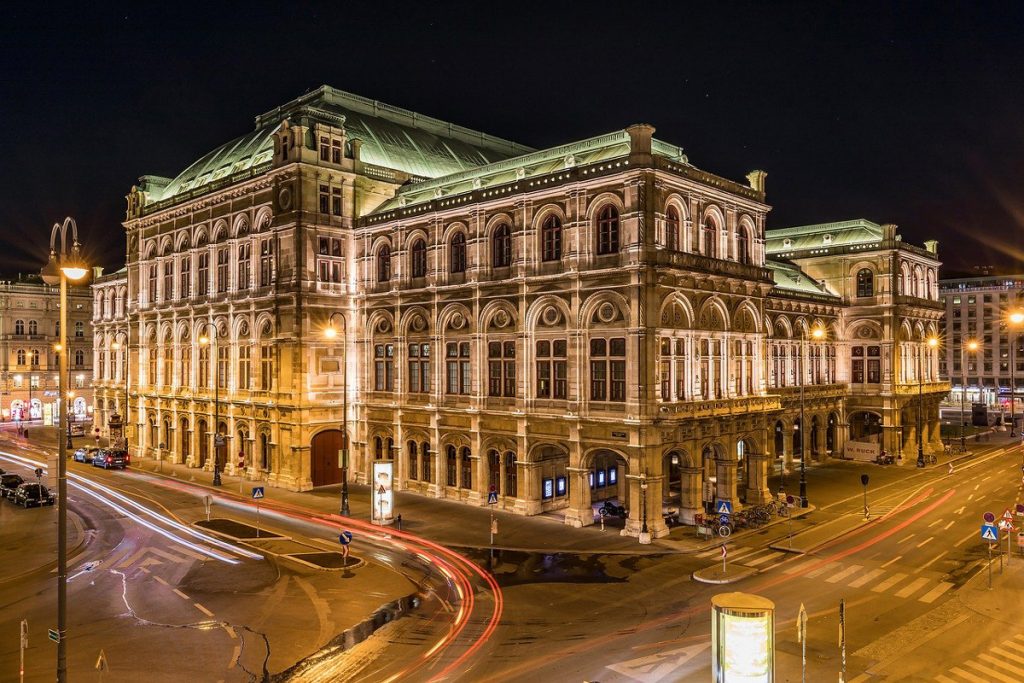
Vienna is also known for the relatively new, experimental type of music, called Neue Musik, that dates back to the beginning of the 20th century and is influenced by many classical composers. In order to bring this kind of music closer to the Viennese (and Austrian) audience, in 1988 the Italian conductor Claudio Abbado founded the famous festival called Wien Modern. This famous festival usually takes place in October and it presents 100 events held at 24 different venues around the city. It is pretty important both for the audience who enjoys the music and for the performers, as it is often the place for many world premieres and first performances.
Besides Wien Modern, there are many other festivals held throughout the year, but mostly in the summer. One of our favorites is the Donauinselfest — a free open-air music festival held on the Danube Island, where you can hear different genres of music, such as pop, rock, alternative, and even traditional (but no classical music). Usually, it might be the biggest open-air music festival in the world, with over 3 million visitors in 3 days. While it couldn’t take place last year due to COVID-19, organizers are optimistic that the festival is going to happen this year. It is planned for Sep 17th—Sep 19th, but it will be much smaller than in the years before. More information about entrance regulations as well as the maximum number of visitors allowed are going to be communicated at the beginning of August.
Another summer festival that we love is Filmfestival at Rathausplatz. Until September 4th you can see classical music films, ballets or classical and non-classical concerts on a big screen in front of the city hall. This is another free activity in Vienna, but remember that due to the pandemic situation you have to preregister if you plan to visit this year and have to be vaccinated, tested, or recovered to be able to attend.
If you’re into clubbing and dancing, Vienna would never disappoint you, as it has quite a nice clubbing scene and this summer the clubs are finally open again after being closed for more than a year. One of the most popular clubs is Volksgarten located right at the famous Ringstraße. The venue even has a nice garden, so feel free to party until you see the sun rise again above the roofs of Vienna. As the line can be quite long, we recommend going there quite early to avoid long waiting times.
What to Eat & Drink in Vienna
Must-Try Dishes
No trip to anywhere in the world would be complete without enjoying local cuisine. Vienna is one of the European gourmet capitals, known for both amazing food and wines. Viennese cuisine is known to be the only one that is named after a city and it is truly an experience that cannot be missed — there are various dishes, sweets, and drinks that you have to try.
When it comes to classic Viennese cuisine, the ultimate top choice dish is definitely Wiener Schnitzel — a national meal made of a thin cutlet of veal that is breaded and pan-fried in clarified butter (Schmalz) or oil and it’s usually served with potatoes in some form and a salad. This national meal is quite a simple one, but it’s delicious and everybody loves it! The best place to try the authentic Wiener Schnitzel is at Figlmüller Wollzeile, often referred to as “the home of the Wiener Schnitzel”. This authentic restaurant is located near the Stephansdom Cathedral, so it’s perfect for a lunch or dinner break after exploring the city center. Today they offer different varieties of schnitzel for mid-range prices, so a visit here is totally doable.

Another beloved meal in the Austrian capital is goulash — a meal imported from Hungary, a little bit adapted, and made just amazing. In Vienna, this delicious stew with beef is usually served with dumplings called Semmelknödel. One of the best places to try this dish (and its different varieties) is another mid-range restaurant called Gulaschmuseum. It’s also located in the city center — in the Schulerstraße, not that far from Figlmüller.
If you’re into street food, you will love famous sausages at a “Würstelstand“, which you will find all over the city. These delicious sausages are made from both beef and pork, encased in sheeps’ intestines. They’re usually served with mustard and go perfect together with pickled cucumbers or peppers. No matter what time of the year it is, these affordable sausages make a great snack or even a simple and quick meal. Here you can find out more about the history of these Viennese institutions as well as our Top-4 Würstelstand recommendations in town.
International Cuisine in Vienna
If you enjoy trying out different international dishes, you should know that Vienna has an amazing international culinary scene as well. There’s a wide range of restaurants with international cuisine all around the city, but most of them you will find around Naschmarkt — especially if you’re craving oriental (such as falafel or hummus) or Southeast-Asian food.

We recommend you visit Neni am Naschmarkt — an amazing mid-range oriental restaurant set in the heart of the Viennese most popular marketplace. If you don’t feel like sitting down, take a walk around the market, you’ll find many food stalls with oriental food.
For the best Chinese food, you should visit nearby Restaurant ON — a not-so-typical mid-range Chinese restaurant with an amazing garden perfect if you’re seeking a place to cool down after a long walk around the city. If you’d like to experiment with Thai food, there’s a great, slightly hidden place (also mid-range) that serves authentic Thai dishes, in the 2nd district called Kamala Thai Imbiss.
Most of these restaurants are vegan-friendly, but if you’re looking for even more vegan meals, check out Karma Food. On four locations around the city, you’ll find delicious vegan specialties such as curries or bowls for reasonable prices. Our tip: Check out their weekly menus beforehand to make sure you’re not missing out on your favorite dish.
Best Sweet Delicacies
When it comes to sweet delicacies, we have already told you about the famous Original Sacher-Torte. Another traditional sweet delicacy that you have to try is called Apfelstrudel. It’s made with thin, light, crisp pastry dough, filled with apples, sugar, raisins, lemon, rum, cinnamon, and cloves, and it’s usually dusted with powdered sugar. Both of these sweets go well with a cup of coffee — keep reading to find out the best places for these tasty experiences.
Coffee Culture in Vienna
Coffee is one of the most popular beverages all around the world and in many countries, having coffee is not simply about its consumption, but also about the company you’re having it with and the feeling it gives you. Vienna is pretty famous for its coffee culture that has been around for centuries. Many famous Vienna-based artists, especially writers, used to work at the coffeehouses. They were always the favorite places to meet up with other artists — they served as a second living room, outside of the house.
Today, Vienna is full of different coffeehouses, some are old and traditional, and some are more modern and hip places where you can try all kinds of coffee (some special mixes, cold brews, etc.). But no matter which coffeehouse you choose for your morning or afternoon cup of coffee, it will be a unique social experience among the local people.
If you’re not sure what coffee to order when in Vienna, we recommend Viennese classic Melange — it’s similar to a cappuccino but usually without cocoa powder, and it is topped with half hot milk and half foamed milk. Another favorite among Viennese people is Einspänner, which is topped with whipped cream, and if you’re a fan of an Americano you should ask for a Verlängerter (literally, “the elongated one”).

As we already mentioned, some traditional sweet delices are a perfect addition to a warm cup of your favorite beverage and there are many coffee houses where you can order both. Here we will recommend you some of our favorite cafés in Vienna — we’re sure you’ll love them:
- Café Central, Landtmann, Demel, or Café Sacher where you can try the original Sacher cake — these are more on the expensive side,
- Kaffee Alt Wien or Kleines Kaffee (Tiny Coffeehouse), which are mid-range cafés.
Viennese Wines
Did you know that Vienna is the only big city in the world where wine is made in an economically substantial amount? Yes, there are about 700 hectares of vineyards in Vienna and they leave a significant mark on the city’s landscape and culture. White wines are grown in about 80 percent of the vineyards and they represent a huge part of the Viennese tradition.
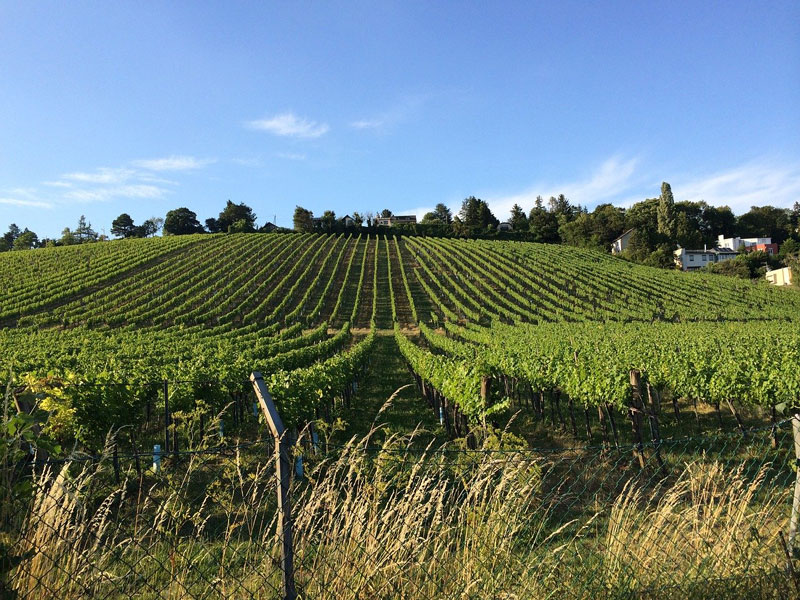
When in Vienna, you should try “Wiener Gemischter Satz“ (Viennese wine blend) — it’s a real specialty in the Austrian capital. You can enjoy famous Viennese vines in most of the bars or restaurants in the city or on the edge of town in wine taverns that offer wine from their own vineyards together with homemade delicacies. These taverns are called heuriger and they have been considered an intangible cultural heritage by UNESCO.
Where to Stay in Vienna
Vienna is a very tourist-friendly city and there are varieties of accommodation that you can find in the capital. Depending on your travel style, the price you’re willing to pay, and the plans you have for your stay in Vienna, you can find various hotels, hostels, and apartments in all of Vienna’s districts (Bezirke).
We have a couple of recommendations for you, but before you make any decisions, be sure to investigate a little bit on your own.
One of our favorite hotels in Vienna is Hotel Daniel, which is a contemporary boutique hotel, with some quite interesting features, and a slogan that says “Urban Stay — Smart Luxury”. Some of the hotel’s luxurious rooms are equipped with hammocks, there are bees on the roof, a magnificent garden with a trail in which you can stay (which is just as comfortable as the rooms are), and a bike and Vespa rental, to make your Vienna discovery easier. This mid-range hotel is located right next to Belvedere Palace, which is a pretty great starting point for your walk around the city.
Another great hotel is Magdas Hotel, located right next to the Prater, which means it’s close to the Innere Stadt — the city center. With the slogan “Stay open-minded”, it is quite clear that you might get a different experience in this hotel. This hotel is a social business, founded by Caritas, the social aid organization of the Roman Catholic Church. Magdas Hotel is all about the people — people from around the world come here to stay and to work as well. They have a lot of international employees, so 23 different languages are spoken among them, but they still manage to understand each other and to be an amazing team. The hotel has an amazing design; everything is done in cooperation with artists, architects, and art students.
If you’re looking for a place to stay at the vivid shopping street Mariahilferstraße and yet close to the cool museums we’ve talked about, we highly recommend you Ruby Marie. All ruby hotels are affordable but yet luxurious. From 80s kitsch to haute couture, royalty to reportage, each Ruby hotel has its own unique story and design, rooted in the city it calls home. They also support all things local, from the food they serve at breakfast to the bands who play in the bar. Our tip: visit the gorgeous rooftop garden at Ruby Mary and enjoy a drink in this enchanting atmosphere. The rooftop garden is also open for non-hotel guests.
These are just a few of our recommendations, there are many more accommodation options in Vienna for you to consider, so don’t hesitate to explore for yourself.
More Useful Information about Vienna
There certainly is more information that you’d find useful for your trip to Vienna, such as opening hours of important places, important phone numbers, or language basics. You can find this information in our FREE digital guide called Vienna Basics. Check it out!
Explore Vienna Digitally
Whether you’re lucky enough to be planning a trip to the Austrian capital right now and are looking for a Vienna walking tour, or you’re at home, seeking digital ways to explore Vienna — we got you covered.
There are so many Vienna tours available on the internet that you probably have no idea where to start. So, our team gathered the most interesting information about the history of the beloved Austrian capital and brought them to you in the shape of amazing digital tours of Vienna that you can use at home or on the spot.
We hope that this ultimate guide to Vienna gives you all the needed insights into the lovely Austrian capital. Stay tuned for more in-depth information — new Vienna-related blog posts and audio guides are coming your way!
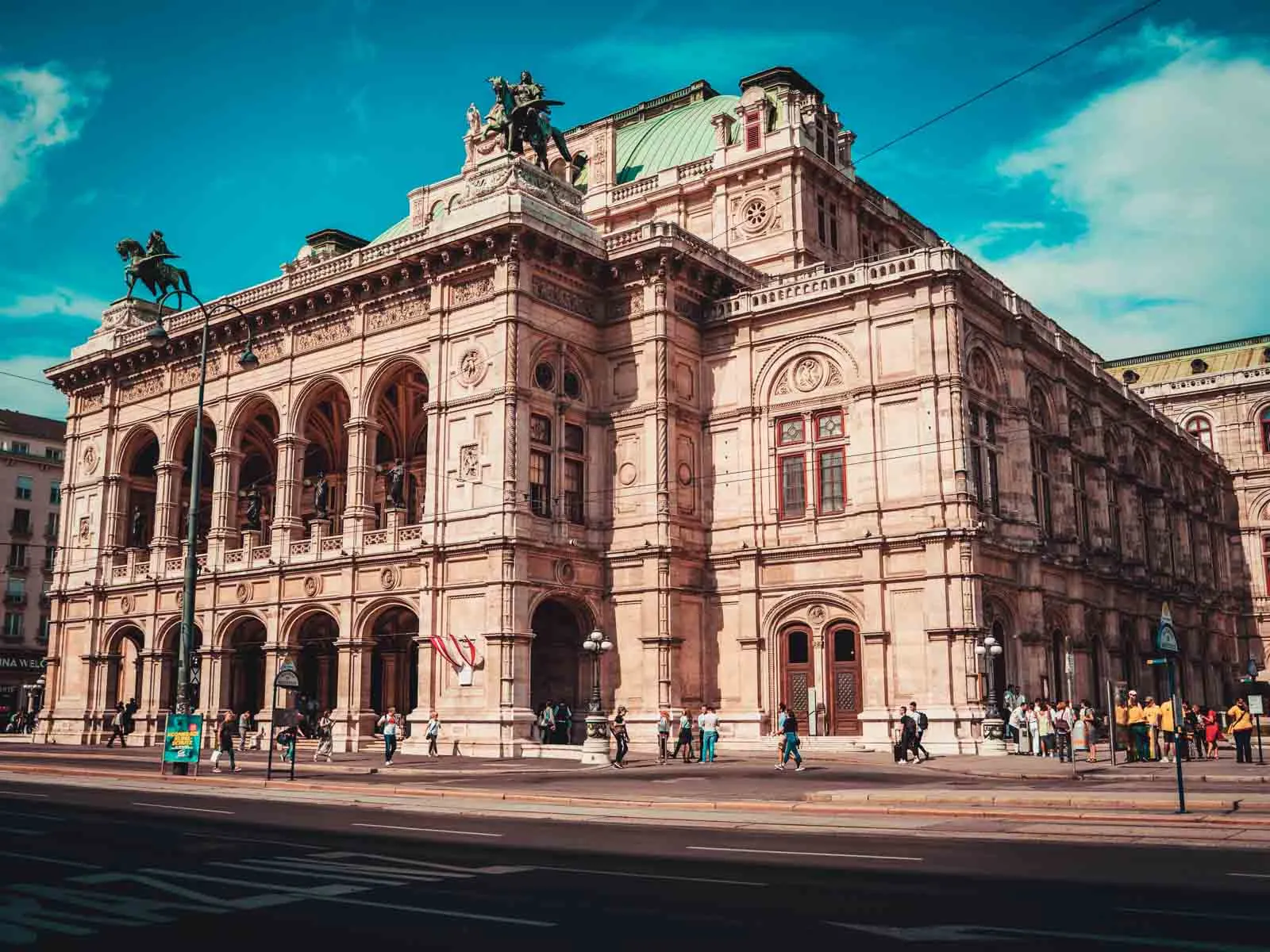
Ultimate Beginner’s Guide to Vienna
€ 4.49
This tour covers historical highlights, reveals fascinating stories, and takes you down a few cobblestone streets that most visitors never see.

Explore the Heart of Old Vienna
€ 4.49
Vienna is full of history! Discover it by walking through the small alleys around the Rotenturmstraße. Every corner and cobblestone will tell you about the genesis of the city…

A Music Lover’s Guide to Vienna
€ 6.99
Waltz through the city and discover the places that inspired great musicians that have walked Vienna’s streets.

St. Stephen’s Outdoor Experience
€ 6.99
The official outdoor tour! Why not take a walk with us around St. Stephen’s Cathedral and discover the most important landmark and symbol of Vienna!

Vienna On Wheels: From Schönbrunn Palace to Stubentor
€ 2.29
Rent a bike, Segway, or scooter and explore the best Vienna has to offer on wheels.

Vienna On Wheels: From Hundertwasserhaus up to the Wine Hills
€ 2.29
Get yourself a ride and head out on this exciting tour on which you’ll catch many sides of Vienna that most visitors never see.

Love for Sale in Old Vienna
€ 9.99
The dirty secrets and shady sides of Viennese erotic activities over the years come out of the shadows in this tour.

Otto Wagner and Naschmarkt
€ 2.29
Naschmarkt not only offers culinary highlight but also architectural ones: the Art Deco and Viennese Modern Age buildings by Otto Wagner…

The Emperor’s Greenhouse: Palm House
€ 9.99
This audio tour of the Palm House Schönbrunn will enable you to discover more than 4,000 plants from every continent.
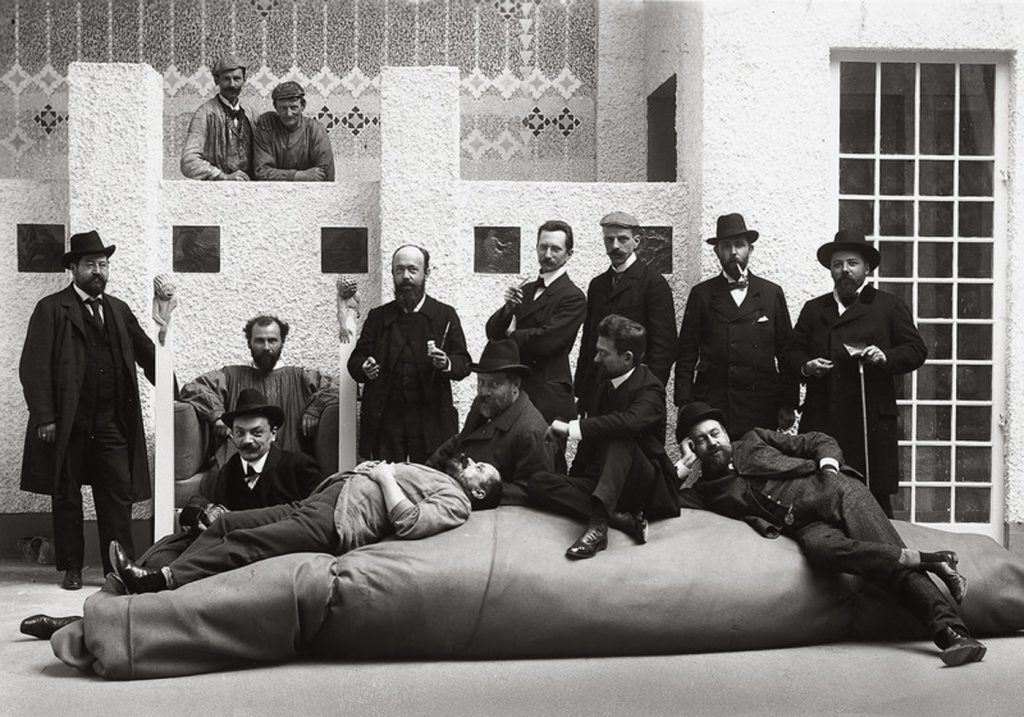
Tour Through the Vienna Secession
FREE
Discover in this audio tour the history and architecture of the Secession and get to know interesting facts about the artists’ association.

